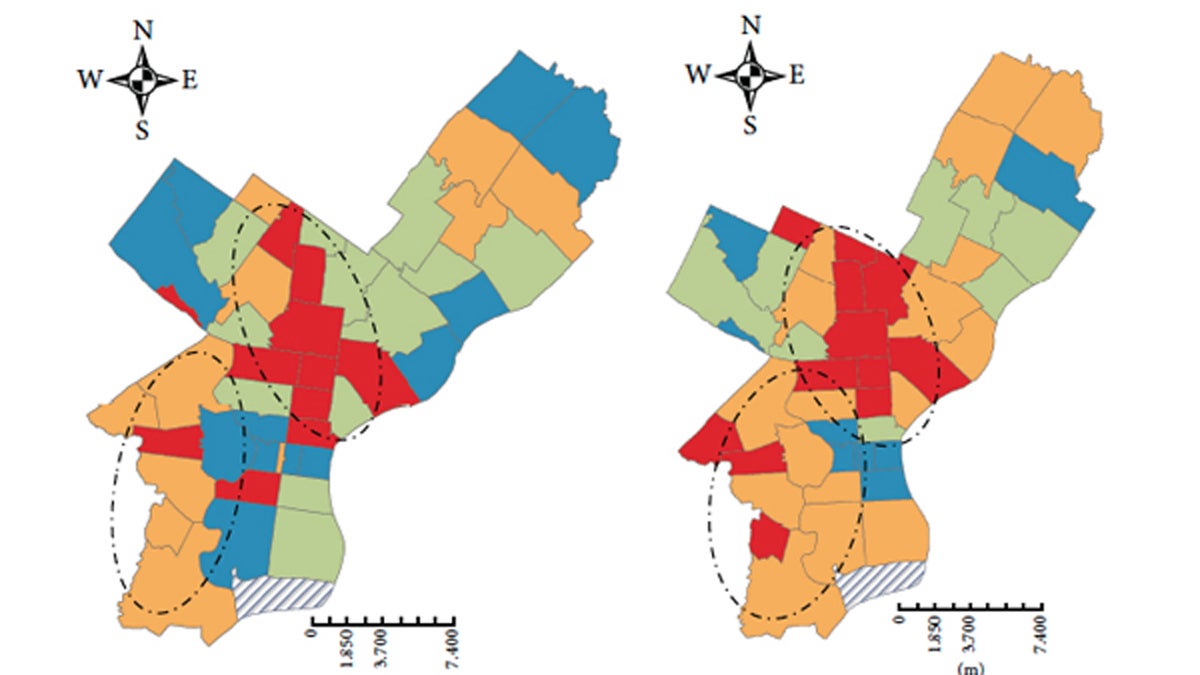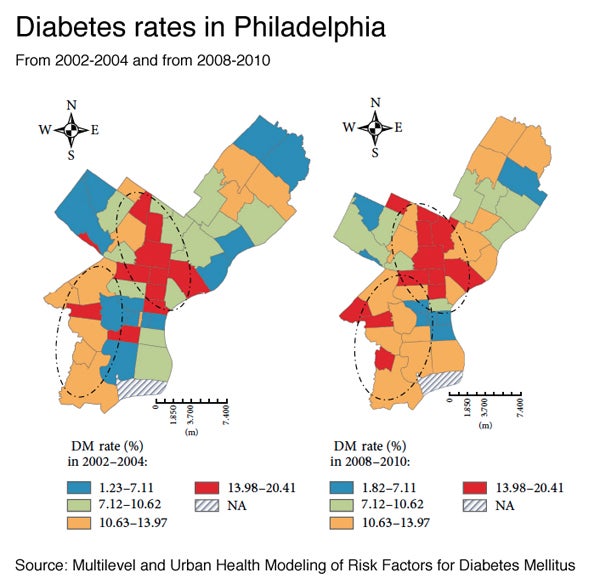As diabetes rates rise in Philly, researchers work on detecting those at risk

These maps show the change in diabetes rates among Philadelphians from 2002-2004 and 2008-2010. The full map, with key can be seen below. (Image via the Multilevel and Urban Health Modeling of Risk Factors for Diabetes Mellitus)
Health researchers at Drexel University are working to uncover new and more sophisticated ways to pinpoint who is most at risk for diabetes and heart disease.
Some of the work is focused on Philadelphia, which holds the unfortunate No. 1 spot among the largest cities in the U.S. for the proportion of residents with diabetes.
Internist Ana Núñez and her team study health disparities related to cardiovascular disease, but she said may people don’t realize the link to diabetes.
“Just having diabetes actually increases your risk for heart disease almost as if you’ve had a heart attack already, that’s how profound an effect it is,” she said.
Philadelphia has a large population of African-Americans, and doctors have known for some time that black Americans have an increased risk for diabetes. But Núñez, associate dean for urban health equity education and research at the Drexel College of Medicine, said when she and other doctors are counting up risk factors, it may be important to note more than an individual’s race.
Perhaps doctors need to also know: “Are you Caribbean black, are you African-American black, are you African?” she said.
In another investigation, Núñez and colleague Longjian Liu noted a strong link between disadvantaged neighborhoods in Philadelphia and high rates of diabetes.
Liu tracked diabetes rates for different ZIP codes across the city for two time periods: 2002-2004 and also for 2008-2010. In the earlier period, 21 ZIP codes had highest rates of diabetes (10.6 percent or more). Years later, 29 ZIP codes across the city had the highest rate.
That work is part of an effort to better understand the health drag of living in a disadvantaged neighborhood. It’s information that may be useful to policy leaders who want to invest in communities to improve health, said Liu, a researcher in the department of epidemiology and biostatistics at Drexel’s School of Public Health.
“What neighborhoods should we pay attention to?” Liu said.
“If you are person with diabetes, and you have to store insulin, it has to be in a refrigerator, and there are places in Philadelphia where residents don’t even have resources for a refrigerator. But are you necessarily going to say at your doctor’s visit as you get your refill, ‘I don’t have a refrigerator?'” Núñez said.
She is also interested in studying people who exercise regularly, eat well and stay healthy despite the odds of an impoverished neighborhood with limited health resources.
“They are able — personally — based upon either family support, headset, or motivation, or resources, they are able to buffer the fact that they living in a neighborhood that doesn’t have a lot of that stuff,” Núñez said.

WHYY is your source for fact-based, in-depth journalism and information. As a nonprofit organization, we rely on financial support from readers like you. Please give today.

